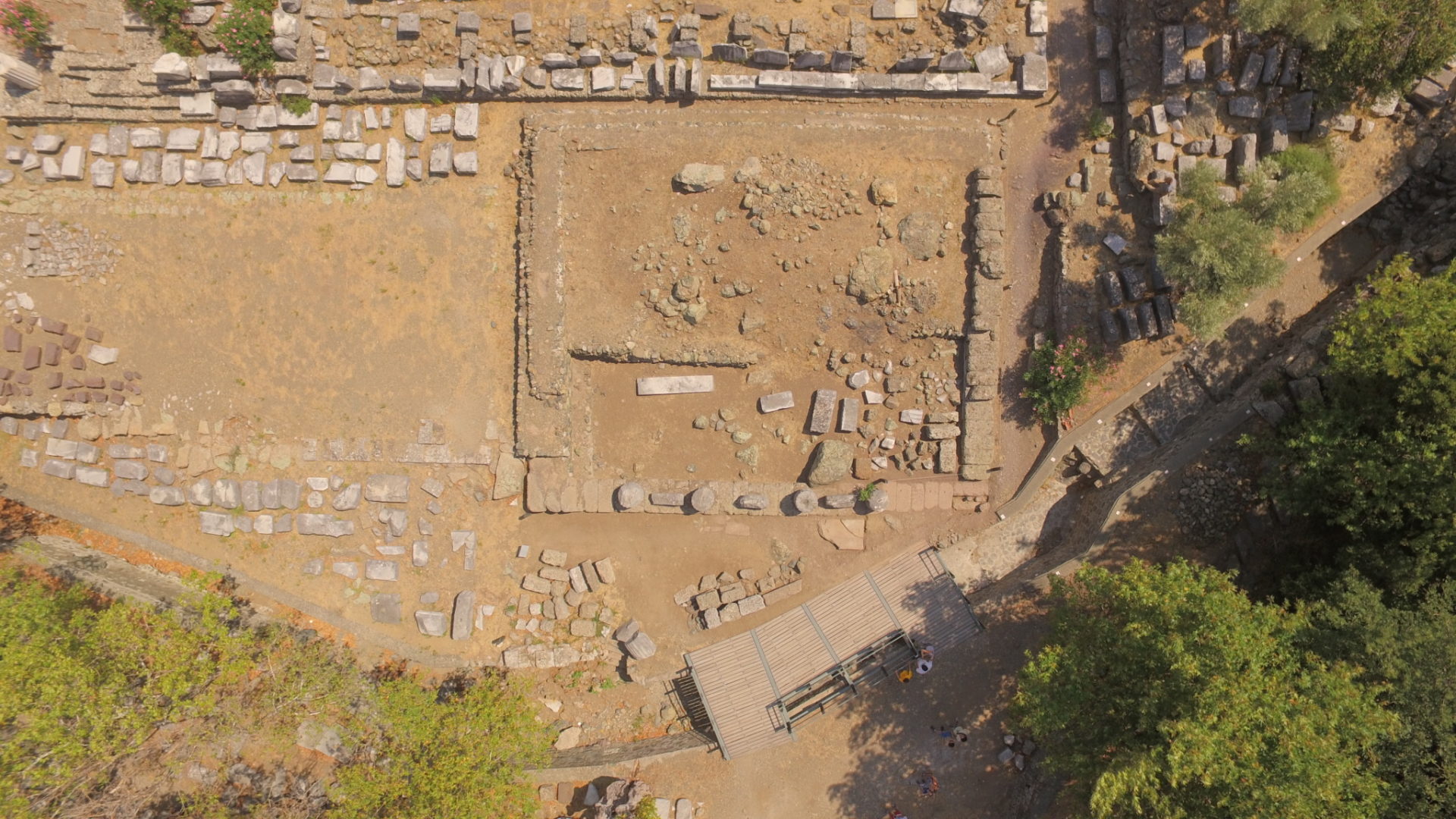Why Did the Initiate Cross the Ravine? Understanding the Altar Court and Theater
By: Jess Paga
The Sanctuary of the Great Gods at Samothrace is full of mysteries. Deep in the central sanctuary, however, snuggled up against the ravine, is a building that does not seem too mysterious at first glance – the Altar Court. It is a square building that had a beautiful marble façade with Doric columns and an inscription. Once you take a closer look, though, this building turns out to be just as mysterious as the ancient rites that drew pilgrims to the rocky island for centuries.
Altar Court Reconstruction, Samothrace Volume 4, Part II, 1964
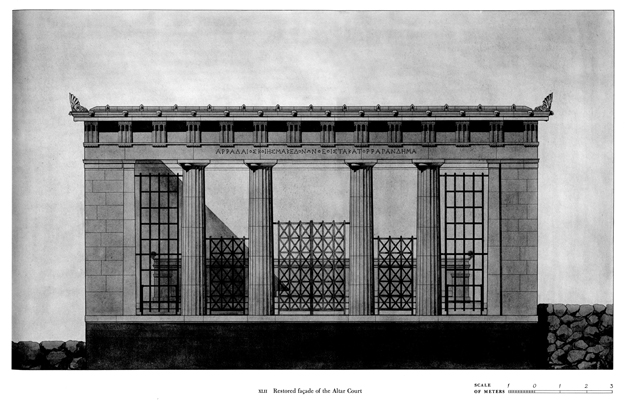

One of the biggest mysteries about the Altar Court (14) is its location. It is so close to the ravine, the southeast corner of the building is virtually gone – washed away by the powerful torrents that cascade through the Sanctuary. It also faces west, across the ravine and towards the ancient Theater (13). But the ancient ground level for the Altar Court and Theater did not seem to match up. One big question we tried to answer this summer, then, was how worshippers would have approached the Altar Court – how do you get across the ravine here? Could you walk from the Theater to the Altar Court? Why would the ancient builders orient the building towards the deep ravine? How did the orchestra of the Theater deal with the ravine?
View of the Altar Court from South Looking North
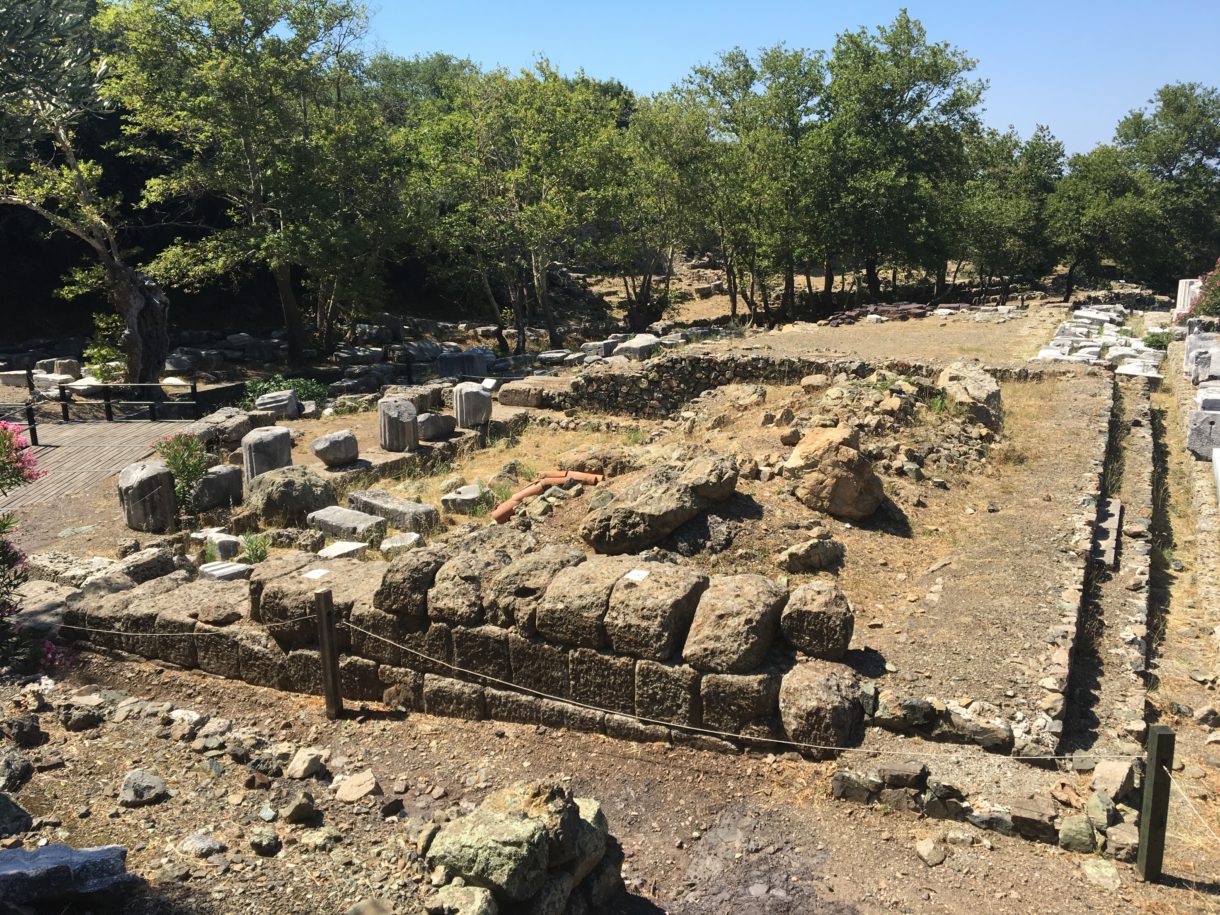
To answer these questions, we looked at the foundations of the Altar Court, the course of the boulders deep in the ravine bottom, and some curious steps and retaining walls. After much careful measuring and experimentation, we concluded that there was an ancient platform or terrace reached by a flight of four steps. It started on the south side of the Altar Court, between the building and the ravine, and then extended around to the front (west side) of the building. This platform crossed the ravine at this point, meeting up with the Theater. This meant that the Altar Court and Theater were originally at about the same ground level, so worshippers could have strolled across the ravine and visited both! Below is a an aerial view (taken with a camera attached to a drone) of the remains of the Altar Court adjacent to the Central Ravine, which curves alongside the Altar Court. The bridge visible in this aerial photograph over the Central Ravine between the Altar Court and Theater is modern.
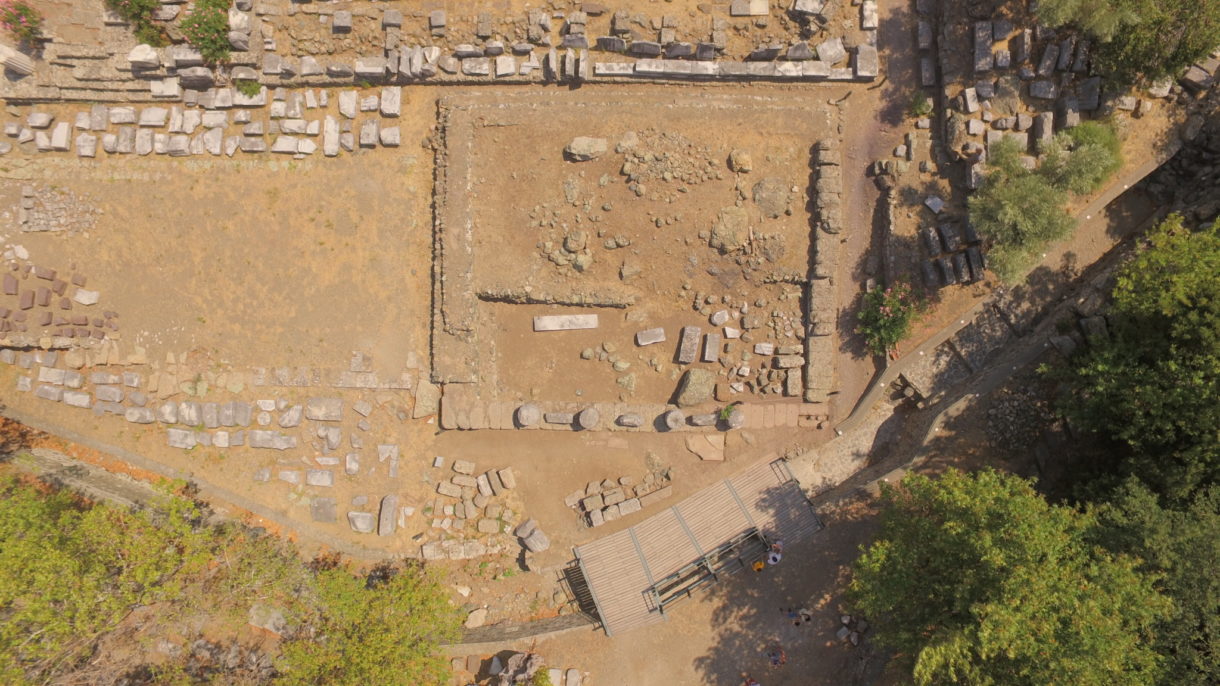
Once we established this new ground level, the orientation of the building started to make more sense. The Altar Court communicates with the Theater and the Western Hill rather than with the other buildings of the Central Sanctuary. With nearly identical ground levels and the fact that they face each other, the Altar Court and Theater become part of an architectural complex – a type of lynchpin that pivots away from the Central Sanctuary and towards the Western Hill. Ancient worshippers and initiates could have walked up the steps to the south of the Altar Court, passed around to the front of the building, and then walked across the ravine and directly into the Theater.
View of Altar Court from the Theater
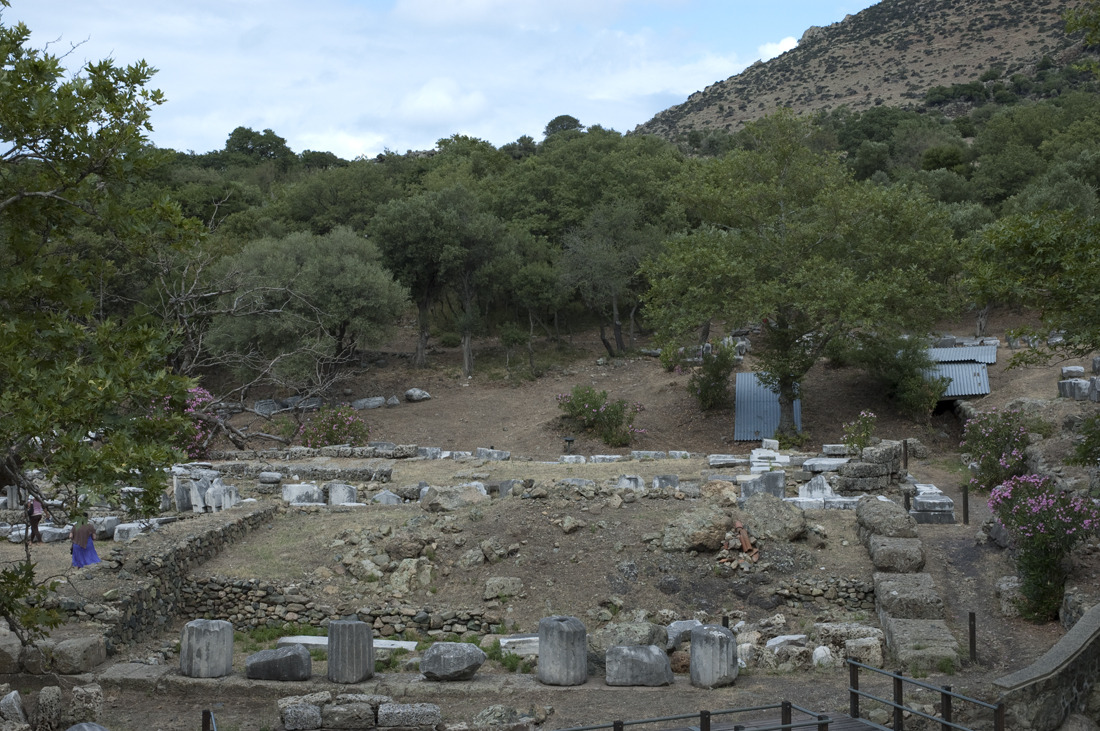
There are still many mysteries about the Altar Court (who built it and when? was it really unroofed? did it really house a huge altar?). This summer, though, we were at least able to unravel one of them.

